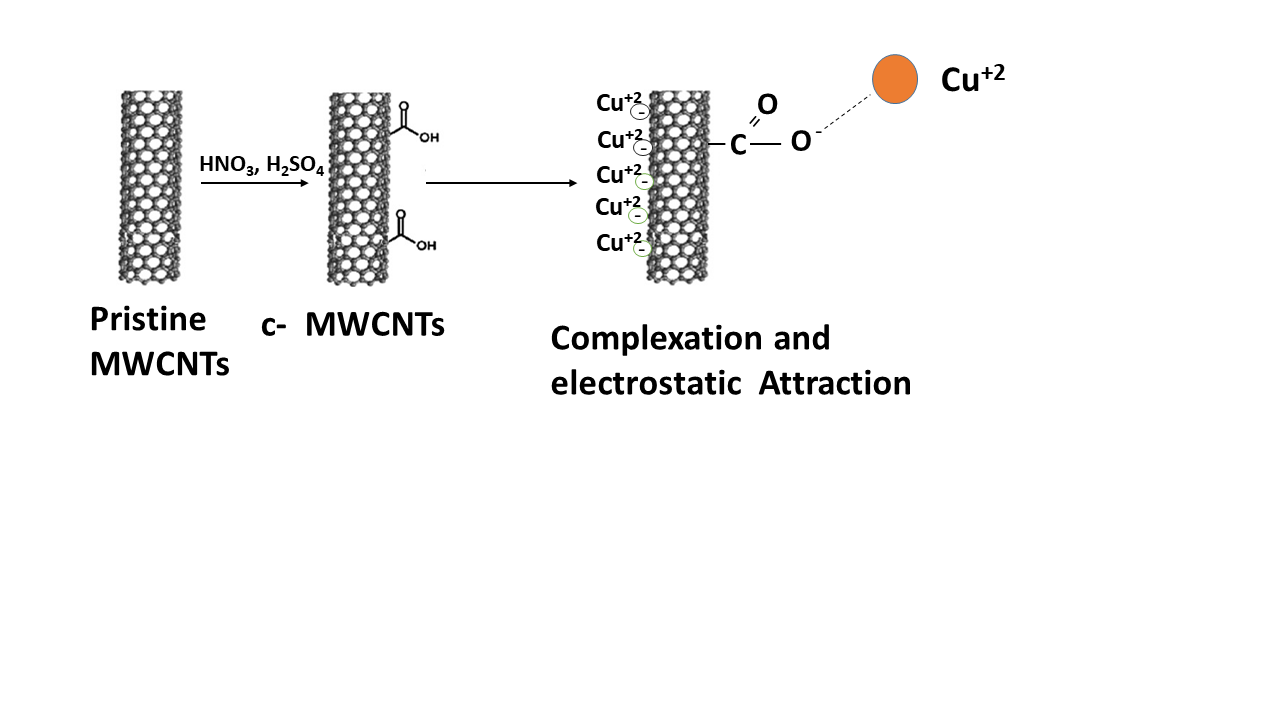
Water pollution caused by various toxic contaminants has become one of the world's most serious issues. Nanotechnology has received a lot of attention in recent decades, and various nanomaterials for water remediation have been developed. For this purpose, MWCNTs were directly synthesized using a chemical vapor deposition process, which was then purified and functionalized using an acid treatment. At various temperatures, the synthesis of MWCNTs by chemical vapor deposition (CVD) of acetylene is investigated. The wet impregnation method is used to prepare catalysts using Fe/Co as a catalyst in the presence of zirconium oxide and aluminum oxide as support materials. Zirconium oxide was found to be a good support material for the deposition of high-purity MWCNTs with high yield 88.9 %. The effect of growing time and temperature on carbon yield was investigated, and it was discovered that the amount of MWCNTs deposited increased as reaction time increased, with the optimum temperature for the reaction being 700 0C. The effect of temperature on the crystal size of synthesized MWCNTs was investigated using XRD, and it was found that the crystallite size declined as the temperature goes up. SEM and TEM were used to examine the structure and purity of synthesized MWCNTs at various temperatures. The MWCNTs that were synthesized have a web-like network structure, a homogeneous distribution on the catalyst surface, and a smooth surface. The prepared CNTs were purified by chemical oxidation, and the effect of acid treatment on the surface of the CNTs was investigated using XRD and FTIR. The functionalized CNTs were used for copper ion adsorption, achieving an adsorption potential of 238.09 mg/g and a high regeneration efficiency.
Total file downloads: 3